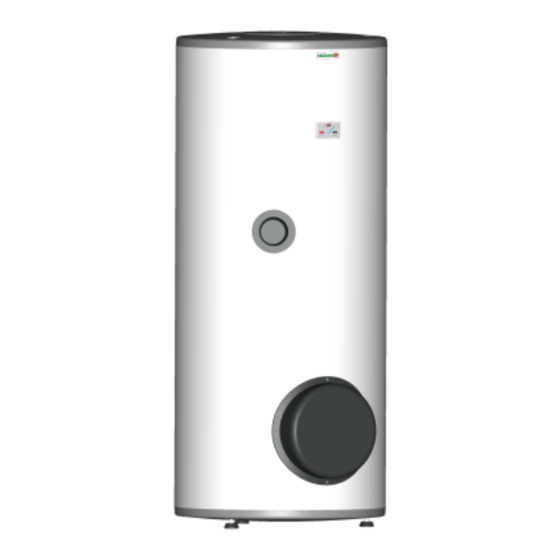entire cold water supply piping. It is therefore advisable to drain all fittings and piping that
carry water, up to the part where the house water meter is installed (connection of the
house to water main) which is not jeopardised by frost. When the tank is to be used again,
it has to be filled with water and one needs to make sure that the water flowing out at the
hot water valves did not contain any bubbles.
2.8 INSPECTION, MAINTENANCE & CARE FOR THE APPLIANCE
During the heating process the water that increases its volume during the heating must drip
off the safety valve outlet (in non-pressurised connection this water drips off the
combination faucet valve). In full heating (about 65 °C) the volumetric water gain is approx.
3% of the tank capacity. The function of the safety valve has to be checked regularly (based
on the information contained in the attached safety valve manual). In common operation,
such a check needs to be implemented at least once a month, and after each heater
shutdown that exceeds 5 days.
Caution! In doing so, the cold water supply pipe and the connection fitting of the tank may
get heated! If the hot water heater does not work, or if hot water is not withdrawn,
no water shall drip off the safety valve. If water drips, then the pressure in the supply piping
is either too high, or the safety valve is defective. Please call a specialised plumber
immediately!
If water contains too many minerals, an expert has to come to remove the scale that forms
inside the tank, as well as free sediments. This has to be performed after one or two years
of operation. Repetitive water heating causes limestone sediment on both the tank walls and
chiefly the flange lid. The sedimentation depends on the hardness of water heated, its
temperature, and amount of hot water consumed.
We recommend checking and cleaning the tank from scale and eventual replacement of
the anode rod after two years of operation. The anode life is theoretically calculated for two
years of operation; however, it changes with water hardness and chemical composition
in the place of use. Based on such an inspection, the next term of anode rod exchange may
be determined. Have the company in charge of service affairs clean and exchange the anode.
When discharging water from the heater, the mixing valve battery for hot water must
be open in order to avoid creating underpressure that would prevent water discharge. The
cleaning is carried out through the hole in the flange by: draining the boiler, dismantling the
flange lid and cleaning the tank. A new sealing has to be used for re-fitting. Since the inside
of the heater has special enamel, the surface of which must not get in contact with a scale
removing agent – do not work with a lime pump. Remove the lime layer with a timber and
suck it off, or wipe it off with a clout. After that, the appliance must be rinsed thoroughly and
the heating process is checked the same as during the initial putting in operation. Do not use
any abrasive cleaning agents or dye thinners to clean the outer shell of the heater (such as
cellulose thinner, trichlor, and the like). For cleaning use a wet clout and add a few drops of
liquid cleaning agent for household applications.
- 14 -

